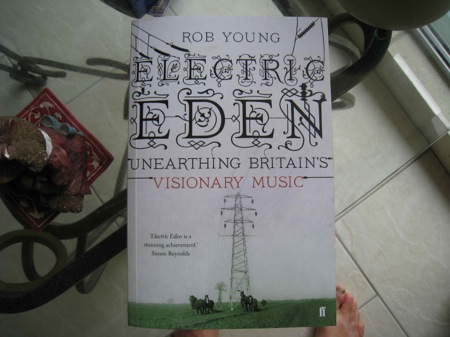Rob Young Electric Eden: Unearthing Britain's Visionary Music

If it's widely accepted that Bob Dylan's Basement Tapes represents an exploration of the old weird America, you'd expect that, with a history stretching back through the dark ages into the mists of antiquity, there'd definitely be an old weird Britain.
After all, if the Americans can conjure up something that’s old and weird in a matter of a few hundred years you’d expect a culture with a reputation for eccentricity to manage a fair bit over a millenium.
It was an interest in the prospect of unearthing some genuinely weird strains of British culture that had me seeking out a copy of Rob Young's Electric Eden: Unearthing Britain's Visionary Music. What turned up in the PO Box was a hefty wrist-breaker that’s a handy starting point for an exploration of some of the esoteric aspects of British folk-rock, but not quite what I was looking for.
For a start, even though there was a revival of interest in folk song through the early parts of the twentieth century, it was a rather genteel affair, carefully weeding out the esoteric or erotic, and producing something suited to folk songs for primary school kids.
While Young runs through the chronology of the rediscovery of rural music you get the sense that there's an awful amount of esoteric material that's gone missing as progress continued its relentless advance.
Still, what Young's come up with an interesting exposition of a couple of themes going back past composers Vaughan Williams and Holst, and when he gets to the sixties he hits his straps with a detailed survey of the various strands of folk-rock including Pentangle, The Incredible String Band, Nick Drake, John Martyn, Traffic and, of course, Fairport Convention. As you'd expect, it's not a subject that's suited to an orderly chronological approach.
Young starts with a lengthy account of the recently rediscovered Vashti Bunyan's wanderings from London to an artists' commune on the Isle of Skye, a journey that allows Young to establish a few themes. From there the approach is closer to a time line, though the different thematic strands mean a bit of chopping and changing backwards and forwards in time.
Young does a thorough job of detailing the group comings and goings, and the use of album covers through the book provides a handy means of finding discussion of the album in question without recourse to the index. It works nicely if you're looking to browse through the contents, grazing here and there rather than looking to follow a narrative.
Given the sheer volume of material contained herein, it's not something that you're likely to read from cover to cover in a single sitting. More likely, once the average music freak has worked his way through the tome, taking his or her time doing so, it'll be a case of partial rereads while the orders go in for music that we missed first time around along with the odd excursion into the index while something's playing on the stereo.
As a result, while much of what Young has to say is going to cause some rather heated debate the book as a whole represents a good starting point for further exploration rather than a a definitive history of the English folk tradition. His reading of Nick Drake, for instance, offers markedly differing interpretations from what I can recall from my reading of the Ian MacDonald essay in The People's Music and the biographies by Patrick Humphries and Trevor Dann.
The book goes beyond those halcyon days, exploring currents and trends that brings the reader right up to contemporary developments in the acid-folk sphere, and will be the jumping-off point for a number of visits to the iTunes store over the next few months.
It's all a matter of figuring out where to start.
Some links:
Review in the New York Times
Interview with the author in the Los Angeles Times

